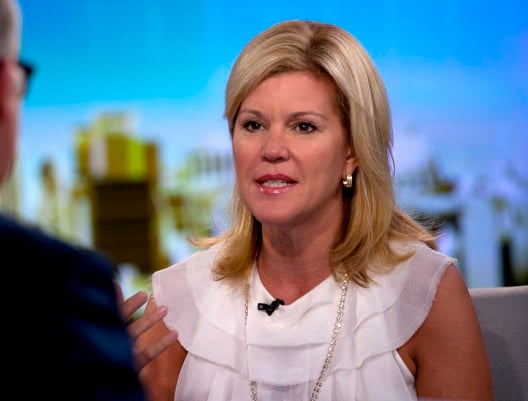Best-performing asset class for second straight-year; 'semi-safe status'
U.S. state and local debt returns will exceed those on stocks, Treasuries, corporate bonds and commodities for a second straight year when adjusted for volatility, the longest winning streak since 2006.
Defaults on local bonds this year dwindled to the lowest since at least 2009 and state tax revenue rose to pre-recession levels. Even with interest rates near four-decade lows, the $3.7 trillion market was more appealing to U.S. investors seeking shelter from Europe's lingering debt crisis and potential federal tax increases in 2013.
“Municipals over the last year or two have definitely regained their semi-safe status,” said Jim Pass, a Chicago- based managing director at Guggenheim Partners, which oversees $8.5 billion in local bonds. “Interest rates continued to decline and spreads continued to tighten.”
Muni debt has returned 3.7 percent this year through Dec. 26 after accounting for trading swings, according to data compiled by Bloomberg and Bank of America Merrill Lynch. Company bonds have earned the second-most, at 3 percent, followed by the Standard & Poor's 500 (SPX) index of stocks at 1.2 percent and U.S. Treasuries, which returned 0.7 percent. Commodities were little changed.
State and local debt returned 4.4 percent last year on a risk-adjusted basis, also the highest among the assets. Munis trailed the group in 2010.
Chapter 9
Investors weren't deterred even as yields started the year near the lowest since the 1960s. Municipal mutual funds added about $50 billion of assets this year through Dec. 19, the most since 2009, Lipper US Fund Flows data show.
The wave of cash persisted through Chapter 9 bankruptcy filings from three California municipalities -- Stockton, San Bernardino and Mammoth Lakes. Munis rallied for five straight months starting in July, after Stockton became the biggest U.S. city to seek court protection from creditors on June 28.
The price-swing variations on local debt are smaller than those on other assets, boosting the risk-adjusted returns, Bloomberg data show. That may be because about 70 percent of muni bondholders are individuals, said Jamie Pagliocco, director of bond managers at Fidelity Investments in Merrimack, New Hampshire.
Whitney's Error
Muni investors “tend to be longer-term holders, and as an asset class it's going to have lower volatility characteristics,” said Pagliocco, whose company oversees about $32 billion in tax-exempts. “As many headlines as there have been around the muni market, it's a really high-quality asset class.”
About $26 billion flowed out of muni mutual funds in 2011 on concern that state and local government credit quality would deteriorate after the 18-month recession that ended in June 2009. The outflows were spurred in part by banking analyst Meredith Whitney's incorrect December 2010 prediction of “hundreds of billions of dollars” of muni defaults within a year.
Instead of widespread municipal failures, local governments showed signs of stabilizing in 2012.
Half of all U.S. states either returned to peak tax- collection levels from before the recession or will soon, according to a survey by the National Conference of State Legislatures released this month. Only 91 muni issuers defaulted for the first time this year through Dec. 18. That's on pace to be the fewest since at least 2009, Municipal Market Advisors data show.
'Background Noise'
The yield on benchmark AAA munis due in 10 years fell to 1.4 percent this month, the lowest since Bloomberg began compiling the data in January 2009. The interest rate has since risen to 1.75 percent as of yesterday, fueled by speculation that the tax-exempt status of municipal-bond interest may be capped as part of a federal deficit-reduction plan.
“I had continued to find interesting how little the market reacted to the amount of discussion around tax reform,” Pagliocco said. “I've seen far less Draconian discussions move the market, and up until these last weeks, the market went through a lot of background noise” and still rallied, he said.
Munis also benefitted from Federal Reserve Chairman Ben S. Bernanke's policy of keeping the central bank's benchmark rate near zero, which has pushed the yield on U.S. Treasuries to near-record lows. That kept benchmark AAA local-debt interest rates above those on federal securities from mid-May to September, the longest streak since 2009.
Cheapest Asset
The 10-year muni-Treasury ratio, a gauge of relative value between the asset classes, was about 101 percent this week, data compiled by Bloomberg show. A ratio above 100 means munis are less expensive relative to Treasuries.
“The muni-Treasury ratio was well over 100 percent for a long time, and as rates got lower and returns got lower, people were looking for the last cheap asset class out there,” said Craig Brandon, a portfolio manager in Boston at Eaton Vance Management, which oversees about $30 billion in munis. “People finally realized munis were the cheapest asset class.”
The risk-adjusted return is calculated by dividing total return by volatility, or the degree of daily price-swing variation, giving a measure of income per unit of risk. The returns aren't annualized. Higher volatility means an asset's price can swing dramatically in a short period, increasing the prospect for unexpected losses.
--Bloomberg News--







